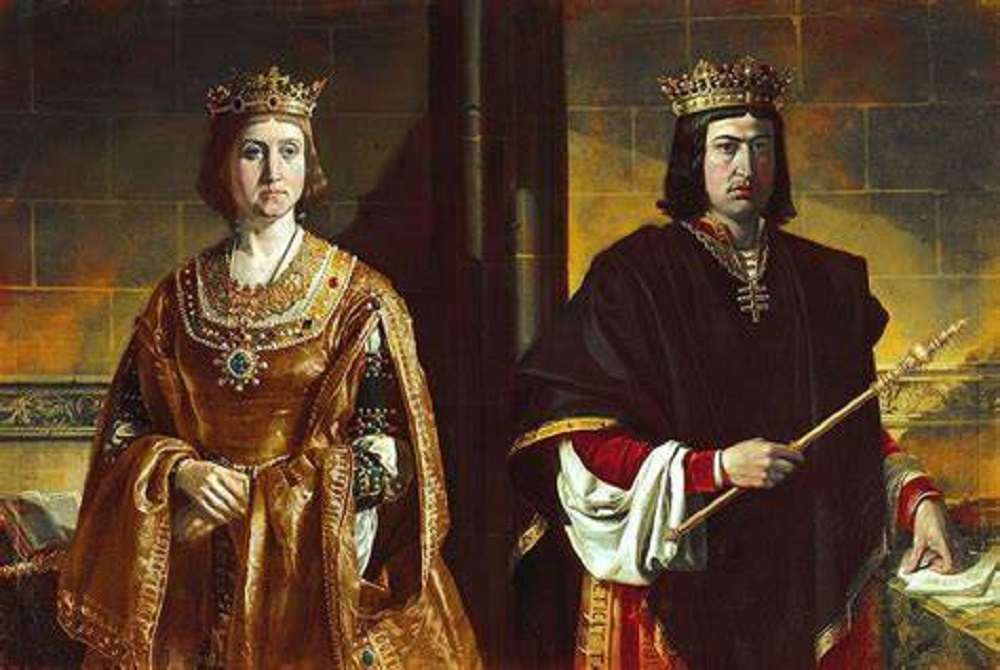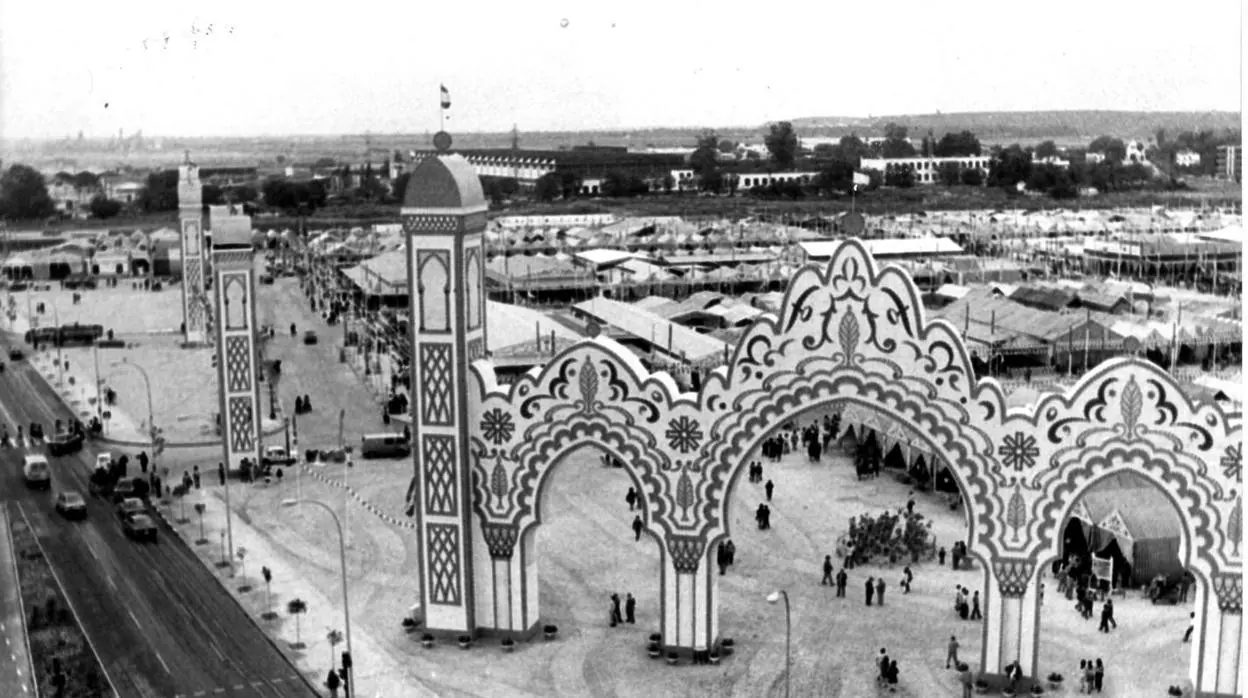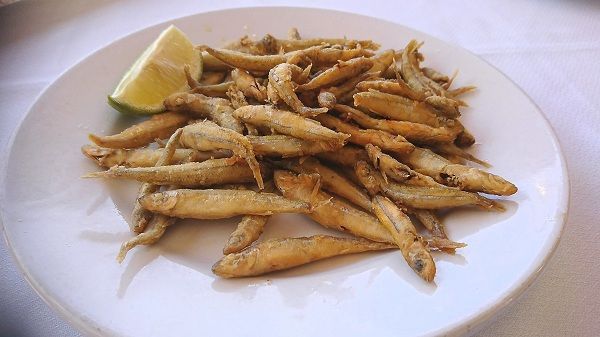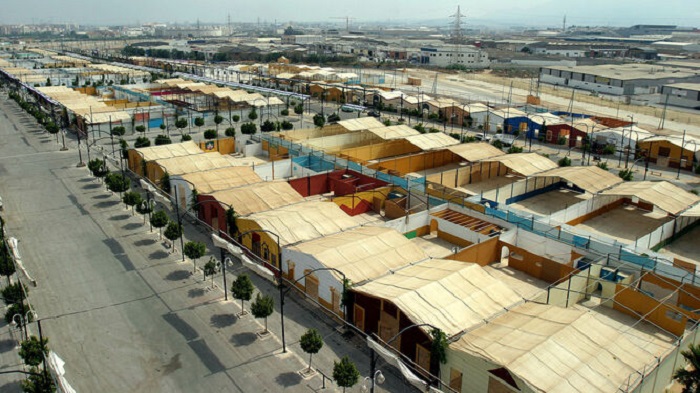In the vibrant region of Andalusia, Malaga’s annual fair is a spectacle that draws both locals and tourists into a whirlwind of color, music, and gastronomy. At the epicenter of this grand celebration are the “casetas” – more than just tents, they are the lifeblood of the fair. These temporary structures, adorned with lights and filled with melodies, encapsulate the essence of Andalusian festivity. This article delves into the significance of these casetas, tracing their historical roots and exploring their role in the modern-day Feria de Málaga.

Maria Perez
Table of Contents
- Historical Significance of the Malaga Fair
- The Role and Offerings of Casetas in the Feria de Málaga
- Musical and Dance Offerings
- Merchandise and Shopping
- Social and Communal Spaces
- Gastronomy in the Casetas of the Feria de Málaga
Historical Significance of the Malaga Fair
The Feria de Málaga, also known as the Malaga Fair, is not just a week-long celebration filled with music, dance, and gastronomy; it is a commemoration of a pivotal moment in the city’s history. The fair’s origins are deeply rooted in the historical tapestry of Spain, particularly the Reconquista, a period marked by the Christian reconquest of territories previously under Muslim rule.
The Reconquest and the Catholic Monarchs
On 19th August 1487, a significant event unfolded in the city of Malaga. The Catholic Monarchs, Queen Isabella I of Castile and King Ferdinand II of Aragon, successfully captured the city, incorporating it into the Crown of Castile. This victory marked the end of over seven centuries of Muslim rule in Malaga and its reintegration into Christian Spain. The Reconquest of Malaga was a crucial step in the larger Reconquista movement, which aimed to reclaim the Iberian Peninsula for Christianity.

Birth of the Fair
In honor of this momentous occasion, the first Malaga Fair was celebrated in 1491. The fair was established as an annual event to commemorate the city’s return to Christian rule and to celebrate the unity and resilience of its people. Before 1487, Malaga had been a Muslim stronghold, and its capture was symbolic of the larger Christian reconquest of Spain.

Evolution Over the Centuries
While the Malaga Fair began as a religious and historical commemoration, it has evolved over the centuries into a vibrant cultural festival. Today, while the fair still pays homage to its historical roots, it is also a celebration of Andalusian culture, traditions, and the spirit of festivity. From flamenco performances to equestrian shows, the fair offers a diverse range of activities that reflect the rich cultural mosaic of Andalusia.

The Role and Offerings of Casetas in the Feria de Málaga
The Feria de Málaga is a vibrant celebration that captures the essence of Andalusian culture, and at the heart of this festivity are the “casetas”. These temporary structures, set up specifically for the duration of the fair, are more than just tents or booths; they are the epicenter of celebrations, offering a myriad of experiences to visitors.
Check out our complete blog about: La Feria de Malaga: Complete guide to understand it
Nature of Casetas
Casetas are textile booths adorned with an array of colorful ribbons, creating a festive atmosphere that is both inviting and captivating. Each caseta is uniquely designed, reflecting the personality and preferences of its owner or the group that manages it. While some casetas maintain a traditional Andalusian ambiance, others adopt a more contemporary vibe.
Gastronomic Experiences
One of the primary attractions of the casetas is the culinary delights they offer. Many casetas transform into cozy restaurants, serving traditional Andalusian dishes, tapas, and local wines. From sizzling churros to refreshing rebujitos (a mix of sherry and soda), the food and drink options in these tents are a gastronomic journey through the region’s rich culinary heritage. Visitors can savor authentic Spanish flavors, with each bite and sip transporting them to the heart of Andalusia.
Learn Spanish at Vamos Academy, the Best Language Academy!!!
Study Spanish in Malaga
Enjoy the beaches in Malaga, while you improve your Spanish in Malaga
- Great teachers
- Wonderful experience
- Well-located in Malaga
- The future of Spain
Study Spanish in Buenos Aires
Try delicious empanadas in Buenos Aires, while you improve your Spanish in Buenos Aires
- Wonderful streets
- Delicious dishes
- The best place from Argentina
Study Spanish Online
You can learn Spanish online anywhere at anytime with us
- Anywhere, anytime
- Fantastic learning experiences
- Comprehensive explanations
- Always available
Musical and Dance Offerings
Music and dance are integral to the Feria de Málaga, and the casetas are the primary venues for these performances. Live bands, DJs, and performers ensure that each caseta offers a distinct musical experience. From traditional flamenco rhythms to contemporary summer hits, there’s a diverse range of music to suit every taste. Additionally, many casetas have dedicated dance floors where visitors can groove to the beats or even join in traditional dances like the sevillanas.
Merchandise and Shopping
Some casetas offer a wide array of merchandise, from traditional Andalusian crafts to modern accessories. These booths provide visitors with an opportunity to shop for unique souvenirs and gifts, making the fair a shopper’s paradise.
Social and Communal Spaces
Casetas serve as social hubs where families, friends, and even strangers come together to celebrate. They provide a space for people to mingle, share stories, and forge new friendships. The communal spirit of the casetas is a reflection of the welcoming nature of the people of Malaga, who take pride in sharing their culture and traditions with the world.
In conclusion, the casetas are the heart and soul of the Feria de Málaga. They offer a diverse range of experiences, from gastronomic delights to musical performances, ensuring that every visitor leaves with cherished memories and a deeper appreciation for Andalusian culture.
Gastronomy in the Casetas of the Feria de Málaga
The Feria de Málaga is not just a celebration of music and dance; it’s also a gastronomic extravaganza. The casetas, with their vibrant atmospheres, serve as the perfect venues to savor the rich culinary delights of Andalusia. Here’s a deep dive into the types of food that these casetas offer:
1. Buñuelos
Buñuelos are a must-try at the Feria de Málaga. These are deep-fried dough balls, often served with a sprinkle of sugar or a drizzle of honey. They are more than just a culinary delight; they symbolize shared experiences and memories, with families often gathering around to enjoy them together.
Read our blog about it: Spanish Buñuelos at the Malaga Fair
2. Pescaíto Frito
Pescaíto frito, or fried fish, is a staple at the Feria. Given Malaga’s proximity to the sea, it’s no surprise that seafood plays a significant role in its gastronomy. The pescaíto is an array of fish, from anchovies to squid, all deep-fried to crispy perfection.

3. Salmorejo
A creamy cold tomato soup, salmorejo is synonymous with Southern Spanish cuisine. It’s made with ripe tomatoes, bread, olive oil, garlic, and vinegar, then topped with hard-boiled eggs and jamón (Spanish ham).
I you want to know more about it: Spain’s Cold Soups: Discovering Salmorejo and Gazpacho
4. Jamón Ibérico de Bellota
One of the most iconic dishes to try is the succulent Jamón Ibérico de Bellota. This premium ham comes from pigs that have been fed on acorns, giving the meat a distinct and exquisite flavor.
Also read our blog about: Spanish Olive Oil: The Heart of the Mediterranean Diet and Its Health Benefits
5. Tortilla Española
A classic Spanish dish, the tortilla española or Spanish omelette, is a thick omelette made with potatoes and onions. It’s a hearty dish that’s perfect for any time of the day.
Check our blog about it: Mastering the Spanish Omelette (Spanish Tortilla): Complete Guide
6. Rebujito
While not a food, no gastronomic exploration of the Feria would be complete without mentioning rebujito. This refreshing drink is a mix of sherry and soda, often served over ice, making it the perfect accompaniment to the rich foods of the Feria.

Also read our blog about: Tinto de Verano: All You Need to Know About “Summer Wine”
Music and Dance in the Casetas of the Feria de Málaga
The Feria de Málaga, with its rich tapestry of sounds and movements, is a testament to the deep-rooted musical and dance traditions of Andalusia. The casetas, serving as the epicenter of these celebrations, reverberate with melodies and rhythms that span centuries, offering visitors an unparalleled journey into the heart of Andalusian culture.
Flamenco: The Quintessence of Passion
Flamenco, an art form that has its roots in the gypsy communities of Andalusia, is the crown jewel of the Feria’s musical and dance offerings. Within the casetas, flamenco comes alive in its myriad forms – “cante” (singing), “toque” (guitar playing), and “baile” (dance). The raw emotion of the singers, the intricate melodies of the guitarists, and the fiery passion of the dancers create an atmosphere that is both electrifying and deeply moving. Each performance tells a story, evoking emotions ranging from joy and celebration to sorrow and longing.
Check our Flamenco Classes!! : Flamenco Classes in Malaga Spain
Sevillanas: A Celebration of Life
Sevillanas, with its vibrant steps and twirls, is the dance of joy and celebration. Originating from Seville, this dance has become synonymous with festive occasions in Andalusia. In the casetas, groups of friends and families can be seen dancing the Sevillanas, their colorful “trajes de flamenca” (flamenco dresses) swirling in rhythm to the music. The dance, often performed in pairs, consists of four distinct parts, each with its own set of movements and steps.
Panda de Verdiales: A Musical Legacy
The verdiales, a lesser-known but equally significant musical tradition, have their origins in the mountains of Malaga. This form of music and dance, characterized by its distinctive rhythm and the use of unique instruments like the “pandero” (tambourine) and “crótalos” (castanets), is a celebration of Malaga’s rural heritage. In the casetas, “pandas” or groups dedicated to this art form perform, transporting listeners to the verdant mountains of Andalusia.
Also read our blog about: Fandango: Spain’s Passionate Rhythm
Modern Beats: Bridging the Old and the New
While the Feria de Málaga is deeply rooted in tradition, it is not untouched by contemporary musical influences. Many casetas feature live bands and DJs that play a mix of modern Spanish hits, international chart-toppers, and electronic dance music. These modern beats, juxtaposed with traditional rhythms, create a soundscape that appeals to both the young and the old.
Dance Workshops: Immersive Experiences
For visitors keen on learning the traditional dances of Andalusia, many casetas offer interactive dance workshops. Led by experienced dancers, these workshops provide hands-on training in dances like flamenco and Sevillanas. Participating in these workshops is not just about mastering the steps; it’s about immersing oneself in the joy and spirit of Andalusian dance.
FAQs about the Casetas of the Málaga Fair
1. What are ‘casetas’? “Casetas” are traditional stalls or tents set up during the Málaga Fair. They serve as gathering spots where visitors can enjoy music, dance, food, and drinks.
2. Are all casetas the same? No, casetas can vary in size and theme. Some are privately organized by families, associations, or groups, while others are public and open to all visitors.
3. Can anyone enter a caseta? Most casetas at the Málaga Fair are public and open to everyone. However, there are private casetas that require an invitation or connection to the organizing group.
4. What can I expect inside a caseta? Inside a caseta, you’ll typically find a lively atmosphere with music (often live performances), a dance floor for “sevillanas” (a traditional Spanish dance), tables and chairs for guests, and a bar area serving food and drinks.
5. What kind of food and drinks are served in casetas? Casetas offer a range of Andalusian and Spanish delicacies, including tapas, fried fish, ham, and cheese. Drinks often include local wines, beer, and the traditional “rebujito” (a mix of sherry and soda).
6. Do I need to pay to enter a caseta? Entry to public casetas is typically free. However, food, drinks, and sometimes special performances might have a cost.
7. Where are the casetas located? Casetas are found at the fairgrounds, known as the “Real de la Feria.” They are also spread throughout the city, with many in the historic center during the daytime celebrations.
8. Is there a dress code for the casetas? While there’s no strict dress code, many locals embrace the festive spirit by wearing traditional Andalusian attire. Women might wear “flamenca” dresses, and men might wear suits or traditional hats.
9. Do casetas have specific opening and closing times? Casetas usually open in the early afternoon and can go on until the early hours of the morning, especially on weekends. However, specific times can vary.
10. Are there family-friendly casetas? Yes, many casetas are family-friendly, especially during the daytime. The Málaga Fair is a celebration for all ages, and many casetas offer a welcoming environment for children and families.
As the sun sets on the Malaga Fair, the casetas come alive, echoing with laughter, clapping, and the rhythmic beats of flamenco. They stand as a testament to Malaga’s enduring spirit, a blend of age-old traditions and contemporary flair. Whether you’re a first-time visitor or a lifelong resident, the casetas offer a unique window into the soul of Andalusia. As the fair concludes and the casetas are packed away, they leave behind memories that linger, a reminder of the joy, camaraderie, and cultural richness that is the hallmark of the Feria de Málaga.







